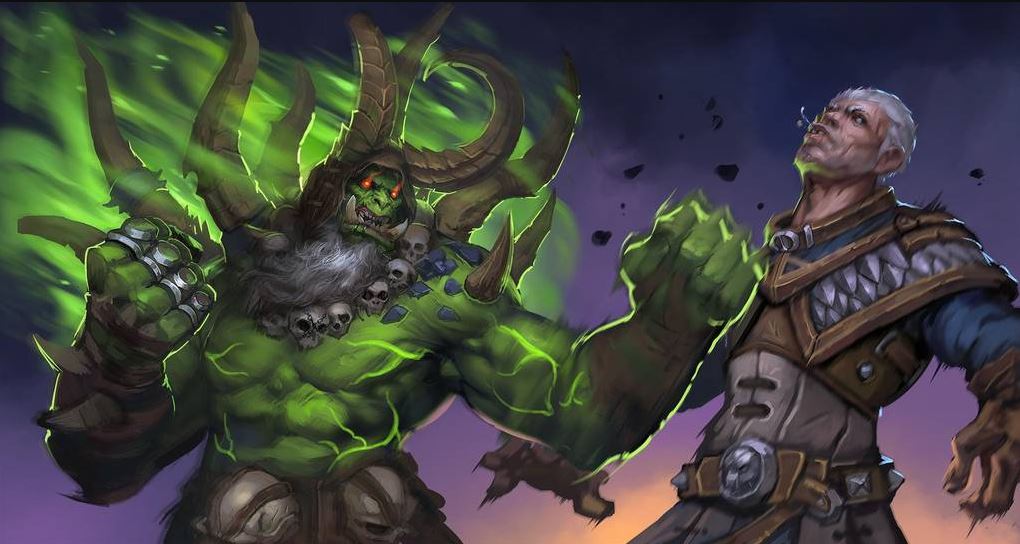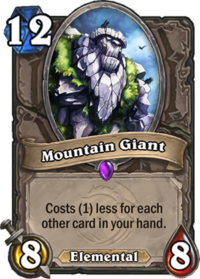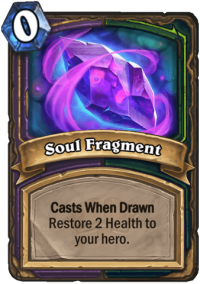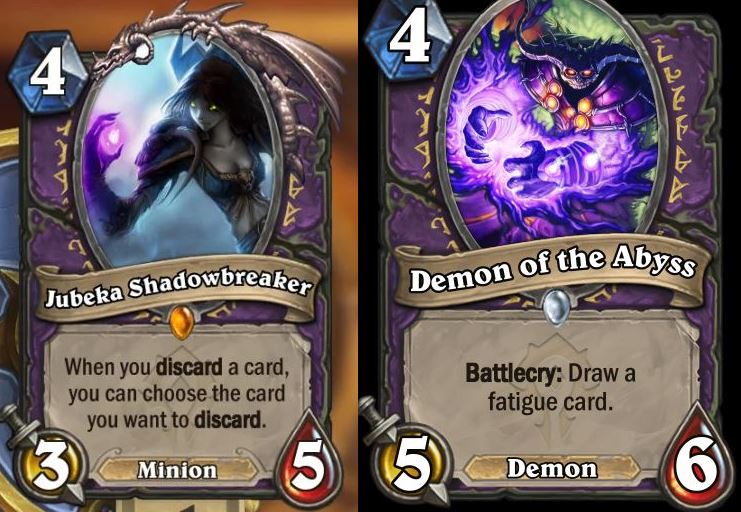In Hearthstone, several factors constitute the unique look and feel of a class: Hero Power, mechanics, card art, background lore, and even hero art.
All of those factors make up what we will call “class identity” from here on. Class identity constantly changes, and despite the fact that Basic and Classic sets form the foundation of every class, we as players experience a class differently with every new set and every Standard rotation.
In the recent past, it feels like Blizzard approaches class identity differently. Archetypes feel more attached to their classes than ever before.
The Year of the Phoenix, and Scholomance Academy in particular, has provided one of the most balanced metas since Hearthstone’s inception, and the improved concept of class identities definitely paved the way for this development.
The current class identity of Warlock sets an excellent example. By looking through the past, present, and future approaches to Warlock class design, we want to analyze in this article how Warlock’s class identity came about, how it works in the current meta, and how it could be further improved in future development.
The Past of Warlock
We all know that this game was once called “Hearthstone: Heroes of Warcraft”, and thus all basic class concepts were heavily influenced by Warcraft’s lore.
Warlocks in the Warcraft universe worship all different kinds of dark magic and do everything to gain more power. Most of them became immensely corrupted by selling their souls to the Burning Legion, using its demons in exchange. Corruption, souls, demons, sacrifice – this great set of fantasy elements was used to establish the Warlock class in Hearthstone.

However, players who were tinkering around with Warlock decks in the good old Hearthstone days will certainly remember that the class lacked a clear deck-building direction.
The immense discrepancies between self-harming spells and lackluster healing capabilities were only topped by the obviously weakest link in the Basic and Classic Warlock toolkit: Demons. Up to this day, demons as a whole never really dictated Warlock deck-building – despite numerous additions over the years.
That is why Warlock’s class identity development took a rather random direction – in fact, it was a guy called Reynad who supposedly invented the Zoo Warlock archetype that would revolutionize Warlock deck-building.
Zoo Warlock may have been the first archetype that didn’t appear on Blizzard’s list of possible top tier decks, and its sheer power through pure board domination from turn 1 became the thing that a majority of the fanbase thought of when facing a Warlock on the pre-game screen. Up to this day, the Zoo playstyle dictates Warlock’s deck development and has always been a staple “core idea” in deck-building. It still takes advantage of the strongest Basic and Classic cards like Flame Imp or Soulfire, while being able to perfectly adapt to the release of new sets and its mechanics.

Another Warlock archetype that never really fit the general fantasy of the class was the so-called Handlock. To be honest, this Warlock deck that purely relied on the power of two cards that couldn’t be more “un-warlocky” – Mountain Giant and Molten Giant – and would rather attract Shamans in terms of Warcraft lore felt not only unfair to play but also incredibly bland to Warlock fans.
Up until the much-needed adjustments to the Giants package, Handlock remained a go-to deck-building direction when theorycrafting new Warlock decks, and over the course of the years, numerous heavy-control Handlock iterations terrorized the metagames of the past.
On top of that, many of those iterations didn’t feel like a Warlock deck at all, because, once again, neutral cards dictated their playstyle. Reno Jackson, Kazakus, Prince Keleseth, Carnivorous Cube – in the end, Warlock took whatever was needed, regardless of flavor and identity, to gain control of the meta, so at least that behavior somewhat resembled the Warlock fantasy.
The Present of Warlock
So what exactly changed now?
Well, let us take a look at the current iteration of Zoo Warlock:
The first thing that catches the eye is the low amount of neutral cards. Cards like Tour Guide and Cult Neophyte feel like reasonable additions to an existing archetype rather than mechanically significant inclusions. The low amount of neutrals logically causes Zoo Warlock to include 22 to 24 Warlock cards – a fact that redefines the identity of Zoo Warlock and Warlock as a whole!
Yes, this list still uses Zoo Warlock artifacts like Flame Imp and Voidwalker, but they’re now accompanied by powerful demons of the recent Standard sets such as Nightshade Matron and Darkglare.
These demons showcase a minion-heavy game plan that revolves around two core Warlock concepts: Self-harm and Discard. The ability to gain mana and minion advantage by sacrificing health just feels like a Warlock thing to do, and the “high risk, high reward” pseudo-randomness of Hand of Gul'dan serving as a draw engine complementary to the Life Tap hero power encapsulates how Discard should have always worked.

On top of these concepts, the Soul Fragment mechanic added with Scholomance Academy adds another layer to Warlock’s current class identity. As already said, Warlocks in the Warcraft universe collect and use souls to their advantage. Healing, damage-dealing, summoning – the possible applications are limitless!
And that applies to Hearthstone’s current Warlock meta as well. Controlled healing has always been a problematic design space, as the domination of Cube Warlock, thanks to Bloodreaver Gul'dan and Dark Pact, has shown in the past. Draw-dependent healing once again feeds into Warlock’s identity to consume all and everything to gain more power, making the concept of drawing more of a “must” than a “can” in Zoo Warlock.
The fact that Soul Fragments as well as other cards like Raise Dead and Flesh Giant – who finally becomes the giant that feels incredibly warlocky – have been included as dual-class cards doesn’t necessarily interfere with class-exclusive identity. Warcraft’s classes rely on similar principles and schools of magic after all.
The Future of Warlock
Sadly, these great concepts currently only apply to the aggressive playstyle of Zoo Warlock. What would other Warlock archetypes need to be successful and flavorful in terms of Warlock’s identity?
Demons. Warlocks need better demons.
The evolution of Hunter and its beast additions over the last few years shows how class-exclusive tribe development can turn not only minions but also spell cards such as Scavenger's Ingenuity into a meaningful and powerful addition during deck-building. Another great example of successful minion development in the current meta has been the Demon Hunter class. We have to acknowledge the fact that Demon Hunter entered the realm of Hearthstone just this year and therefore received an immensely powerful tool kit to work with right from the get-go.
And despite the numerous balance changes, Warlocks would love to have at least one or the other Demon Hunter demon in their toolkit, especially looking at some of the anti-aggro solutions like Wrathspike Brute or Imprisoned Antaen.
The essence of Warlock’s demon problem, however, lies within the Basic and Classic sets. A total of ten demon cards wait to be used by their masters, but only two of them ever really made it into meta-relevant Warlock lists.
And that alone is totally fine – many Basic and Classic cards haven’t been used all that much in the last six years. What a ridiculously bad minion pool such as Warlock’s demons does to itself though is the immense limitation of design space around it. Effects like summoning or drawing random demons through possibly exciting synergy cards would almost always turn into a subpar play.
Reworking Warlock’s Basic and Classic set demons would not only encourage players to use them in their decks but also enable Team 5 to experiment with demon synergy in the future. If done correctly, demons could become a vital part of Warlock’s identity for the first time in the history of Hearthstone.

The same goes for the Discard mechanic. It has to be said that, compared to the early days of Hearthstone, things got a lot better thanks to Hand of Gul'dan. However, discarding a card is a huge sacrifice, especially compared to sacrificing hit points, for example.
But the Warlock identity offers many other fantasy-driven gameplay elements that are yet to be discovered further in Hearthstone. One tremendously cool addition would be damage-over-time effects, for example. Hearthstone never really touched that area of damage management except for Curse of Rafaam, but forcing your opponent to play a certain card next turn to avoid life, card, or mana loss perfectly fits the Warlock fantasy.
In the end, Warlock’s identity was searching itself over the last few years. Its most powerful unique archetypes relied on high-impact neutral cards, and while exceptions prove the rule, playing a Warlock deck never really felt like living the Warlock experience provided by the Warcraft universe. Zoo Warlock’s current iteration started to lift that curse, and with some reworking and clever use of design space, Warlock could turn into the power-hungry and corrupted class it always was supposed to be!
Leave a Reply
You must be logged in to post a comment.














Great historical article. I will certainly read the incoming ones.
Thanks! More incoming soon 🙂